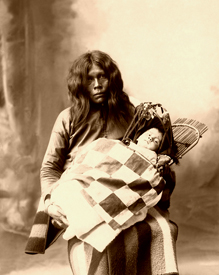Archibald-Barber,
J. "Reliving the ‘Indian Problem’ at First Nations
University." Canada's
Voice
for
Academics. May 2010: n. page. Web.
20 Jan. 2013.
Belanger,
Real “Sir Wilfrid Laurier” The
Canadian Encyclopedia. 2012
Edwards,
Brendan Frederick R. “He Scarcely Resembles the Real Man: Images of
the Indian In Popular Culture” Our
Legacy. 2008.
Web 20 Jan 2013
McDougall,
R. "Duncan Campbell Scott." The
Canadian Encyclopedia.
2012. Web 20 Jan 2013
Meckler,
Lee B. “Rabbit-Skin
Robes and Mink-Traps: Indian and European in The Forsaken”
Canadian
Poetry Press. Web
21 Jan. 2013
Monet,
Jacques S.J. “Sir Wilfrid Laurier” Encyclopedia
Britannica. 2012
Web 19 Jan 2013
Schurz,
C. "Present Aspects of the Indian Problem." North
American Review.
133.296 (1881): n.
page.
Web. 20 Jan. 2013.
National
Archives of Canada, Record Group 10, vol 6810, file 470-2-3, vol 7,
pp. 55 (L-3) and
63 (N-3). For a more
accessible source see: John Leslie, The Historical
Development of
the Indian Act,
second edition (Ottawa: Department of Indian Affairs and
Northern
Development,
Treaties and Historical Research Branch, 1978). 114.
"A
history of residential schools in Canada." CBC
News.
N.p., 16 May 2008. Web. 20 Jan 2013.
“A
History of the Vote in Canada, Chapter 2, From a Privilege to a Right
1867-1919” Elections Canada,
13 July 2012. Web 21 Jan 2013
<http://www.elections.ca/content.aspx?section=res&dir=his&document=chap2&lang=e>







